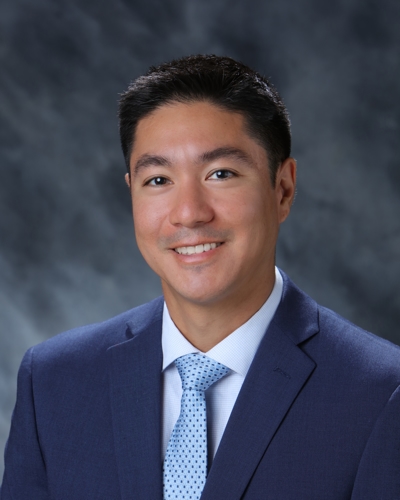
Lateral Pharyngoplasty
Lateral pharyngoplasty is performed under general anesthesia in the operating room to treat obstructive sleep apnea. This procedure is combined with tonsillectomy and involves a combination of tissue removal and tissue repositioning of the soft palate (roof of the mouth) as well as the lateral pharyngeal tissues (side of the throat). The goal of the procedure is to increase the size of the airway without affecting normal functions such as breathing, speaking, and swallowing. Lateral pharyngoplasty appears to offer advantages for some patients with obstructive sleep apnea compared to traditional palate procedures.
For more information about the selection of palate procedures, please see your doctor about choosing the best palate surgery for snoring and sleep apnea.
Risks
Bleeding
Lateral pharyngoplasty, which includes tonsillectomy, carries a risk of bleeding. A major factor in preventing serious bleeding is to avoid the use of aspirin, NSAIDs (such as ibuprofen, Advil®, Motrin®, naproxen, or Aleve®), vitamin supplements, or herbal medications for at least two weeks before and after surgery. Approximately 2-4% patients who undergo lateral pharyngoplasty experience bleeding after surgery. Half of these patients require an additional procedure—either in the outpatient clinic or the operating room—to control their bleeding. Please notify your surgeon immediately if you have bleeding of a teaspoon or more. If the bleeding is significant, immediately seek care in the closest emergency department or call 911.
Infection
Infection is rare but not impossible after lateral pharyngoplasty. Patients typically receive antibiotics at the time of surgery to reduce the chance of infection and decrease swelling. Patients should not use mouthwashes following surgery because many of these contain alcohol that can irritate the lining of the mouth and interfere with healing.
Difficulty swallowing
The palate and sides of the throat are important in swallowing. After lateral pharyngoplasty, patients may experience two kinds of difficulties with swallowing. Many patients have liquids or food come up in the back of the nose or occasionally through the nose because the soft palate is not performing its normal function to separate the back of the mouth from the back of the nose. This happens in many patients for a brief period (1-2 days) due to swelling in the area, but it is unusual for this complication to be permanent and significant. The second kind of difficulty with swallowing is that liquids or food may go “down the wrong way” towards the lungs, resulting in coughing as an attempt to clear the material. This can occur due to swelling and repositioning of the muscles in the sides of the throat but is usually temporary. It can occur for a more prolonged period if some nerves in the sides of the throat are damaged, but it is rare for this to be permanent.
Changes in speech
Any operation on the palate and sides of the throat can cause changes in speech, but these changes are rarely permanent.
Narrowing at the top of the throat
Rarely, lateral pharyngoplasty will result in narrowing behind the palate—which is also the top of the throat. This complication can make breathing through the nose difficult as well as create problems with speaking and swallowing. Additional surgery may be necessary to correct this problem.
Tooth injury
Operating in the back of the throat is impossible unless an instrument is placed to keep the mouth open. This is the same instrument used when tonsillectomies are done. Rarely, a tooth may be injured by this instrument, and the risk is much higher if a tooth is loose or decayed prior to surgery.
Continued snoring
Most patients undergoing lateral pharyngoplasty will also have loud snoring. The goal of surgery is to eliminate obstructive sleep apnea. Usually snoring will improve dramatically if this goal is accomplished. However, many patients will continue to snore to some extent, even after surgery that resolves obstructive sleep apnea completely.
Postoperative Instructions
Pain control
You should be prescribed narcotic pain medication after surgery. Take this medication as you need it for pain control, and try not to let the pain increase until it becomes intolerable before you take the medication. If you are running out of medication and need more, please call the office in advance to obtain another prescription. If you prefer to avoid narcotics, you should feel free to use acetaminophen (Tylenol®). Avoid aspirin, NSAIDs (such as ibuprofen, Advil®, Motrin®, naproxen, or Aleve®), vitamin supplements, or herbal medications for at least two weeks because they can increase your risk of bleeding after surgery. Your pain will be significant for at least the first 7-10 days following surgery, but it should improve markedly by 14 days following surgery.
Diet
Due to the pain and swelling that is to be expected, you will most likely only be able to tolerate a liquid diet for the first 4-5 days after surgery. Push yourself to increase your intake of fluids and avoid dehydration, and you can monitor this by checking to see that you are voiding (urinating) frequently enough. It is helpful to drink liquids in addition to water (such as juices or Gatorade® and, especially, milk shakes or Ensure®) to provide energy and protein during the recovery period. After this period of time, you should transition to soft solid foods such as eggs or yogurt. You should be able to tolerate a largely normal diet by 14 days following surgery. During this period of recovery, you should avoid foods with sharp edges such as chips because these can cause bleeding. Otherwise, you can advance your diet according to your own schedule, being careful not to cause too much pain.
Antibiotics
You may be prescribed an antibiotic to take for several days. This can be useful for preventing infection and decreasing swelling. Take the antibiotics as directed. If you develop a rash or diarrhea (possible risks of antibiotics and other medications), stop the antibiotics and contact your doctor immediately.
Minimize strenuous physical activity for four weeks
At a minimum, patients should walk at least three times a day starting the day after surgery. Walking and spending more time out of bed (walking or in a chair) rather than in bed are helpful because they reduce the risks of developing pneumonia or blood clots in the legs. However, patients should avoid strenuous activity because that typically raises heart rate and blood pressure. For this reason, it can increase swelling or cause bleeding to start.
Jaw discomfort or ear problems
The swelling in your throat that occurs after surgery can cause jaw pain or ear symptoms such as pain, pressure, or fullness. This is common and should improve within 1-2 weeks following surgery. It occurs because the soft palate and tonsils are next to the jaw and the small Eustachian tube that connects the space behind the eardrum to the top of the throat. Swelling in the throat can interfere with your ability to clear or pop your ears, and it can also be sensed by your body as pain coming from your ears even though the ears are not affected (a phenomenon called referred pain).
Sleep with head elevated (at 45 degrees) for at least three days
Elevating your head during sleep decreases blood flow to the head and neck regions. Therefore, it decreases swelling and the associated pain. Elevating the head during sleep may also improve breathing patterns in other ways. Therefore, we recommend elevating your head during sleep at 45 degrees for at least three days following the procedure.
NOTIFY YOUR DOCTOR IMMEDIATELY IF YOU HAVE ANY TROUBLE BREATHING OR IF ANY BLEEDING DEVELOPS!
-
ENT/Otolaryngology ENT, Otolaryngology 2557 Mowry Ave.
Suite 30
Fremont, CA 94538
(510) 248-1590 More Information




